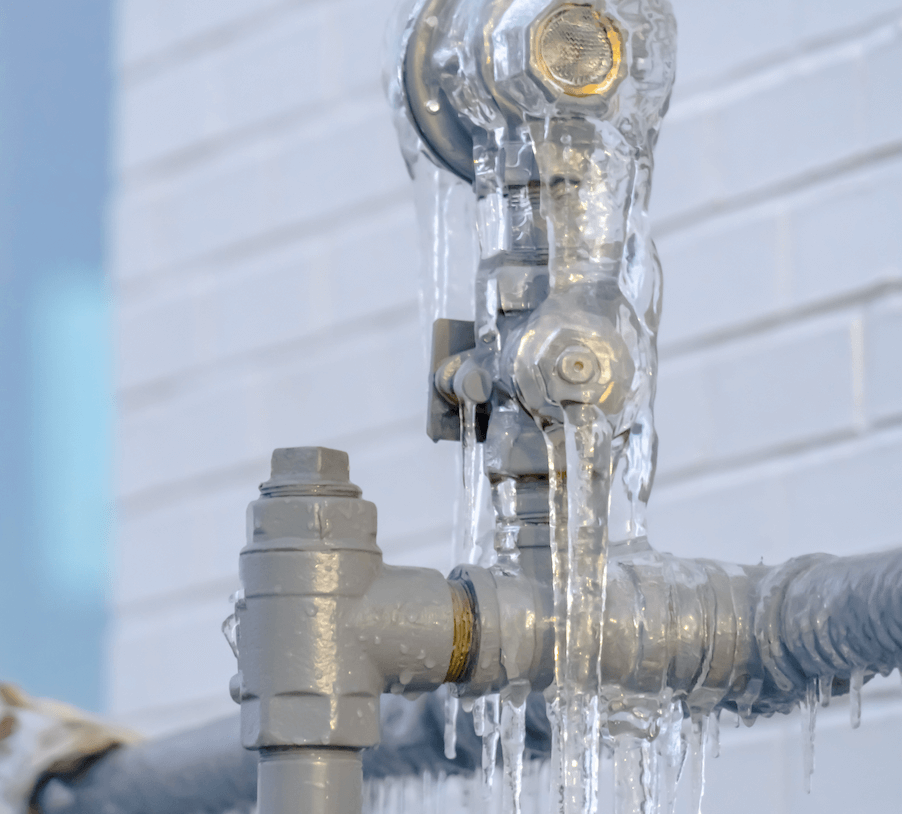Avoiding Frozen Plumbing in Winter: Expert Tips
Avoiding Frozen Plumbing in Winter: Expert Tips
Blog Article
The article in the next paragraphs in relation to Helpful Tips to Prevent Frozen Pipes this Winter is really remarkable. You should take a peek.

Cold weather can ruin your pipes, specifically by freezing pipelines. Below's just how to avoid it from occurring and what to do if it does.
Introduction
As temperatures decline, the threat of frozen pipes rises, possibly resulting in costly repairs and water damages. Comprehending exactly how to prevent icy pipes is essential for home owners in chilly climates.
Comprehending Frozen Pipes
What creates pipes to ice up?
Pipes ice up when exposed to temperatures below 32 ° F (0 ° C) for prolonged durations. As water inside the pipes freezes, it increases, putting pressure on the pipe wall surfaces and possibly causing them to rupture.
Threats and problems
Frozen pipelines can lead to water disturbances, building damages, and pricey repair work. Ruptured pipelines can flood homes and trigger comprehensive structural damages.
Indications of Frozen Piping
Identifying icy pipelines early can stop them from rupturing.
Just how to determine icy pipes
Try to find lowered water flow from taps, uncommon odors or noises from pipes, and noticeable frost on revealed pipes.
Prevention Tips
Shielding at risk pipes
Wrap pipes in insulation sleeves or utilize warm tape to shield them from freezing temperature levels. Concentrate on pipes in unheated or exterior areas of the home.
Heating techniques
Keep interior spaces properly heated, especially areas with plumbing. Open up closet doors to permit cozy air to distribute around pipes under sinks.
Shielding Outside Pipes
Garden pipes and outdoor faucets
Separate and drain garden pipes prior to winter season. Mount frost-proof faucets or cover outdoor faucets with shielded caps.
What to Do If Your Pipelines Freeze
Immediate actions to take
If you think frozen pipelines, maintain taps open to alleviate pressure as the ice thaws. Make use of a hairdryer or towels soaked in warm water to thaw pipes slowly.
Long-Term Solutions
Architectural changes
Consider rerouting pipelines far from outside wall surfaces or unheated locations. Include additional insulation to attic rooms, basements, and crawl spaces.
Updating insulation
Purchase top notch insulation for pipelines, attics, and walls. Correct insulation aids keep constant temperatures and reduces the risk of frozen pipes.
Verdict
Preventing frozen pipelines requires aggressive steps and fast responses. By comprehending the reasons, signs, and preventive measures, home owners can safeguard their plumbing throughout winter.
6 Proven Ways to Prevent Frozen Pipes and Protect Your Home
Disconnect and Drain Garden Hoses
Before winter arrives, start by disconnecting your garden hoses and draining any remaining water. Close the shut-off valves that supply outdoor hose bibs and leave the outdoor faucet open to allow any residual water to drain. For extra protection, consider using faucet covers throughout the colder months. It’s also important to drain water from any sprinkler supply lines following the manufacturer’s directions.
Insulate Exposed Pipes
Insulating your pipes is an effective way to prevent freezing. Pipe insulation is readily available at home improvement stores and is relatively inexpensive. Pay close attention to pipes in unheated areas such as the attic, basement, crawl spaces, or garage. Apply foam insulation generously to create a buffer against the cold. You can also wrap your pipes in heat tape or thermostat-controlled heat cables for added warmth.
Seal Air Leaks
Inspect your home for any cracks or openings that could let in cold air. Seal any holes around the piping in interior or exterior walls, as well as the sill plates where your home rests on its foundation. Additionally, make sure to keep your garage door closed unless you’re entering or exiting. Leaving it open creates a significant air leak that can lead to frozen pipes.
Allow Warm Air Circulation
During cold snaps, it’s essential to allow warm air to circulate evenly throughout your home. Leave interior doors ajar to promote better airflow. Open kitchen and bathroom cabinets to help distribute heat consistently around the rooms. If you have small children or pets, be sure to remove any household chemicals or potentially harmful cleaners from open cabinets for safety.
Let Faucets Drip
A small trickle of water can make a big difference in preventing ice formation inside your pipes. When temperatures drop significantly, start a drip of water from all faucets served by exposed pipes. This continuous flow helps prevent the water from freezing. Additionally, running a few faucets slightly can relieve pressure inside the pipes, reducing the chances of a rupture if the water inside does freeze.
https://choateshvac.com/6-proven-ways-to-prevent-frozen-pipes-and-protect-your-home/

Hopefully you liked our piece about How To Avoid Freezing Pipes. Thanks so much for taking a few minutes to read our post. Are you aware of another individual who is serious about the subject? Feel free to share it. Many thanks for your time spent reading it.
Schedule Here Report this page